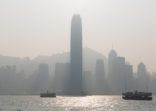Miguel Agarao, Philequity Management
The fund, which is expected to be launched in one-to-two months, will be the first fund tracking the MSCI index, Agarao told FSA. It will provide investors an alternative way of investing in the local stock market, he said.
There are 19 equity index funds in the country, 13 of which follow the Philippine Stock Exchange Index (PSEI). The remaining ones invest offshore and track a foreign index, according to data from the stock exchange and the Trust Association of the Philippines. Philequity already manages an index fund tracking the PSEI.
Since foreign fund managers do not usually follow the PSEI as a benchmark, but use other indices such as the MSCI Philippines, the new fund will be “a better reflection of foreign flows”, Agarao said. “We are giving local investors an opportunity to buy what foreign investors are buying.”
Both indices have similarities in their methodologies, such as the screening for market capitalisation and free float, but there are significant differences. The main one is the consideration of allowable foreign investment.
The MSCI index includes a foreign inclusion factor, which limits the amount of a company’s stock that a foreign fund can buy, while the PSEI does not. As a result, companies that dominate the local index may have very small weightings in the MSCI index, Agarao said.
This is also reflected in the number of companies included in the two indices. The PSEI has 30 stocks, while the MSCI Philippines Index is more concentrated, with only 23 names.
Since around 50% of the participants in the Philippine stock market are foreign investors, Agarao acknowledged that for domestic investors the fund may prove a double-edged sword.
“If foreign investors start selling, the stocks in the MSCI index get punished more than usual, but on the flip-side, if they start buying, you should expect outperformance for those stocks with higher index weights relative to the PSEI.”
Index funds vs ETFs
When asked why the firm decided to launch an index mutual fund rather than an exchange-traded fund (ETF) − the most common passive investment vehicle in many other markets − Agarao said that “certain legalities” around ETFs still need to be ironed out, particularly on tax issues.
There are also a lot of requirements with managing an ETF that are more onerous than those for mutual funds, such as maintaining the product’s liquidity spread and regular reporting of the fund’s net asset value.
The first and so far the only ETF in the Philippines was launched in December 2013 by First Metro Asset Management. It currently has assets of around PHP 1.49bn ($29m), according to the firm’s website.
“It is easier to launch a mutual fund that’s tracking an index than to launch an ETF,” Agarao said. “If we are getting the same return anyway, might as well do a mutual fund.”
Market correction
Investors’ interest in the new fund, and therefore the timing of the launch, may be affected by the recent market correction.
Like in many global markets, the Philippine equity market saw a sharp drop in February. However, unlike other markets, it has not recovered. On 20 March, the PSEI closed at 7,980, 11% below its an all-time high of 9,041, according to data from Bloomberg.
A weaker Philippine peso and a higher inflation are the main factors affecting the Philippine equity market and stifling its performance, according to Agarao.
One year ago, Philippine equities were considered expensive. But after the recent correction they have reached fair value, he noted.
Going forward, Agarao expects that the market will be supported by the country’s comprehensive tax reform, which was passed by the Congress in December.
“The tax reform is the main catalyst for Philippine companies,” he said. They will also benefit from a proposed infrastructure spending programme. “If implemented properly, it will boost the growth significantly,” he added.

















